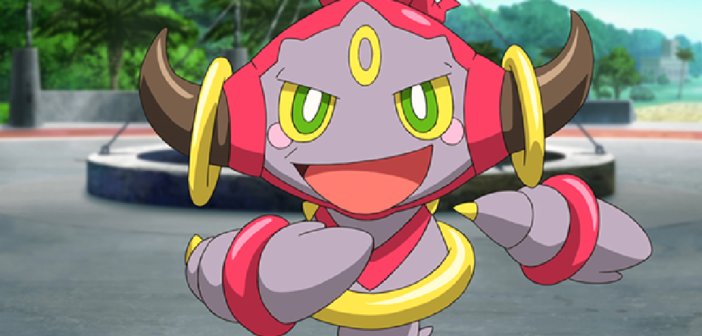
Whenever the name “Pokemon” is mentioned, people instantly think of cute critters such as Pikachu being given commands in battle. In the popular spin-off series, “Pokemon Mystery Dungeon,” that idea is flipped on its head where players now have the freedom not to command Pokemon, but to play as a Pokemon themselves on a vast journey. The fourth installment in this series— “Pokemon Super Mystery Dungeon,” developed by Spike Chunsoft for the Nintendo 3DS—proves to be among the biggest undertakings in the Pokemon Mystery Dungeon series yet.
Like past games in the series, “Pokemon Super Mystery Dungeon” begins by providing players with a personality test for them to decide what Pokemon the player should be. There are 20 different species that a player could become. What is interesting to note is that if players are not interested in the suggestion given based on the personality quiz, they have the option to choose which Pokemon they would rather be, a convenience past games have lacked.
Once a player makes the choice for what Pokemon he/she wants to be, as well as choosing a partner Pokemon, the player wakes up as the Pokemon he/she chose with no memory of his/her past human life. Eventually, the story leads to meeting up with the partner Pokemon. While previous entries of the series lead players quickly into becoming a heroic exploration team, “Pokemon Super Mystery Dungeon” takes a slower pace by having the player adjust to the Pokemon-filled world. From attending Pokemon classes and making friends with classmates as well as fellow Pokemon neighbors; this can make the first quarter of the game feel rather slow and uneventful, but this approach also really helps the player gradually get to know and grow fond of the game’s characters.
As the real adventure begins, players familiar with the series may notice similar story tropes in “Pokemon Super Mystery Dungeon’s” narrative. However, what keeps that narrative interesting is how the game manages to give those tropes a fresh spin. While it is a simple, light-hearted story that people of any age can get invested in, “Pokemon Super Mystery Dungeon” is still an emotional ride that will tug at heartstrings, despite some of its repeated elements that manage to be balanced out with its own twists.
What past players certainly may not expect are some of the many changes made to the core mechanics of the game. Overall, “Pokemon Super Mystery Dungeon” plays very similarly to its predecessors: the player explores a number of randomly-generated dungeons, fighting foes along the way and climbing (or descending) to the end of each dungeon, or reaching a certain floor to clear objectives for clients such as finding lost objects or defeating outlaws. Many mechanics of the main Pokemon series are still utilized, such as evolution, the rock-paper-scissors element of Pokemon types, leveling up, and the recent addition of Mega Evolution, though this last element feels sadly under-utilized.
What may throw veteran players off is what feels to be a much harder game at first glance, but this is not the case. “Pokemon Super Mystery Dungeon” focuses deeper on the roguelike elements of the “Mystery Dungeon” franchise as a whole. “Pokemon Super Mystery Dungeon” relies on some luck factors, but also a lot of strategizing. Additions that “Pokemon Super Mystery Dungeon” brings are the inclusion of wands—items which can be used to inflict status ailments or warp enemies away. There is also the new emera system, where players will find random jewels in dungeons that can be equipped to a Pokemon. These can provide temporary skills that help the player in certain situations, such as allowing additional hits or decreasing damage taken. While these luck-based systems may feel frustrating at times, it does make the gameplay more interesting by pushing players to work with what they are given.
There are other smaller mechanics that “Pokemon Super Mystery Dungeon” introduces too, such as pushing allies away in certain directions, button shortcuts and adjustments to the GUI that help give the player additional information. The AI of allies has also been greatly improved, eliminating one of the series’ biggest flaws. While many of these additions are small on their own, together they truly help provide a much more enjoyable experience that is out to help players rather than hinder them.
The game remains largely a single-player experience, though it does provide some multiplayer content. If a player happens to be defeated in a dungeon, he/she has the choice of calling for help from friends, whether through passwords or by local communication. This is not very deep for a multiplayer experience, but has been a staple of the series since the beginning.
“Pokemon Super Mystery Dungeon” is the largest Pokemon game yet in scale, with over 700 Pokemon to befriend and over 120 dungeons to explore. Recruiting Pokemon is another major change in “Pokemon Super Mystery Dungeon,” where clients or certain enemy Pokemon will join the player after completing missions rather than through random chance after defeating enemies in dungeons. While this is a more laidback method, there is a certain lack of excitement of meeting interesting Pokemon in dungeons, but having no chance of recruiting them there and being forced to wait for certain missions to appear in order to do so.
Though “Pokemon Super Mystery Dungeon” may be the biggest of its kind yet by technical standards, its story is somewhat short to a disappointing extent. Once the main story is complete, there is not much left to do other than work to recruit every single Pokemon by completing missions. While this does extend the game’s playtime exponentially, much of it can feel tedious and monotonous after a while.
Visually, the game is almost identical to its predecessor—”Pokemon Mystery Dungeon: Gates to Infinity.” This is not a huge issue, as many of the Pokemon models and the environments around them do look vivid on the Nintendo 3DS screen. Nevertheless, “Pokemon Super Mystery Dungeon” separates itself with its presence of many nice illustrations, as well as cutscenes that are quite dynamic and impressive on Nintendo’s most recent handheld device. Though it may not be the most phenomenal of graphical presentations, it is certainly wonderful to look at.
The soundtrack for the game is also well done. While it may not be among the highest caliber and there are a number of songs simply heard a few too many times, it is hard not to be charmed by it. From soothing melodies in smaller dungeons, to touching, mood setting compositions, adrenaline-pumping battle themes, and catchy tunes while exploring towns, there are certainly songs that each player will find him/herself humming along to within a few hours. With that being said, it is generous for the developers of the game to offer a Jukebox mode to allow players to listen to these songs whenever they would like, though songs have to be gradually unlocked.
“Pokemon Super Mystery Dungeon” may not appeal to every gamer, or even every “Pokemon” fan. It is an entirely different species from the main “Pokemon” series that has become such a worldwide phenomenon, but that does not make it bad by any means. The game itself still offers a fun battle system, a large world to explore and hundreds of Pokemon to get acquainted with. Its story, while having familiar undertones, is still an emotional piece that is bound to move players as they reach the end credits. It is not only a visually nice-looking game, but a sweet pleasure to the ears with its soundtrack. For Pokemon fans looking for a fun experience or even just looking for something different, “Pokemon Super Mystery Dungeon” lives up to its title of “Super,” and will not disappoint, which is why it earns the rating of 4.0/5.0.






No Comments
Great article Jordan!!! That is detailed and well explained even for someone like me who is challenged in the field.